Your data does not appear to be gamma-distributed, but assuming it is, you could fit it like this:
import numpy as np
import scipy.stats as stats
import matplotlib.pyplot as plt
gamma = stats.gamma
a, loc, scale = 3, 0, 2
size = 20000
y = gamma.rvs(a, loc, scale, size=size)
x = np.linspace(0, y.max(), 100)
# fit
param = gamma.fit(y, floc=0)
pdf_fitted = gamma.pdf(x, *param)
plt.plot(x, pdf_fitted, color='r')
# plot the histogram
plt.hist(y, normed=True, bins=30)
plt.show()

The area under the pdf (over the entire domain) equals 1.
The area under the histogram equals 1 if you use normed=True.
x has length size (i.e. 20000), and pdf_fitted has the same shape as x. If we call plot and specify only the y-values, e.g. plt.plot(pdf_fitted), then values are plotted over the x-range [0, size].
That is much too large an x-range. Since the histogram is going to use an x-range of [min(y), max(y)], we much choose x to span a similar range: x = np.linspace(0, y.max()), and call plot with both the x- and y-values specified, e.g. plt.plot(x, pdf_fitted).
As Warren Weckesser points out in the comments, for most applications you know the gamma distribution's domain begins at 0. If that is the case, use floc=0 to hold the loc parameter to 0. Without floc=0, gamma.fit will try to find the best-fit value for the loc parameter too, which given the vagaries of data will generally not be exactly zero.


